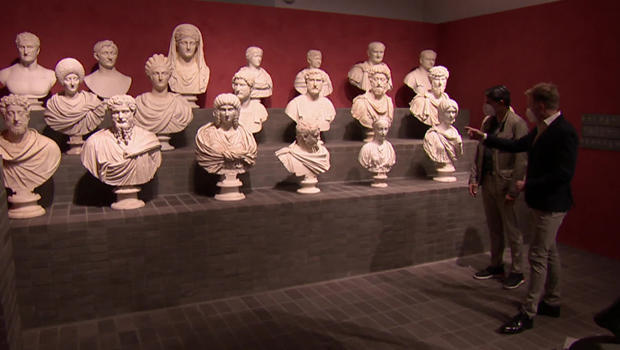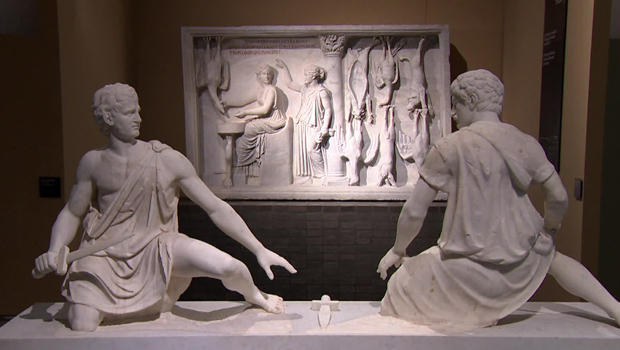Ancient art returns to public view in Rome
Antiquities are everywhere in the Italian capital. But incredibly, one of the most important collections was hidden away for decades:
"It's like having 600-plus works of art drop out of the sky," enthused archeologist Darius Arya, who met correspondent Seth Doane at Rome's Capitoline Museum. "This figure right here is just out of the textbooks. I mean, the sort of thing that we've all studied but we've never seen."
It's the first time in about 70 years these pieces are on public display.
Doane asked, "Is there any way to rank this collection?"
"This is at the top," Arya laughed. "This is the greatest private collection of ancient Roman antiquity."
It belongs to one of Rome's most powerful aristocratic families, the Torlonias, who over generations spent their banking fortune accruing art.
The collection is a who's-who of antiquity: Busts of every emperor, sarcophagi, and reliefs. The 94 ancient Greek and Roman marbles on exhibition are just a fraction of the 620 owned by the noble family.
Doane asked, "Why did this sit locked away for so long?"
"It's just very complicated," Arya replied. "You have many different intentions of a family, you have many different intentions of the city, you have many properties, you have great costs."
Let's just say it "took a while" to work out the details.
Over the years, the Italian state tried to persuade the Torlonias to sell or display the works. Plans to create a museum repeatedly fell through. Instead, the statues sat locked away in Rome until February of last year, when "Sunday Morning" was allowed in.
We cannot reveal the exact location, but archeologist Salvatore Settis, the exhibit curator, let Doane get a glimpse before the precious marbles went on display. They were still restoring them, after sitting out-of-sight for decades.
"Did you know that this collection was just somewhere waiting to be seen?" asked Doane.
"Everybody knows this," he replied.
He knew because Prince Alessandro Torlonia published this catalogue in the 1880s, which was very unusual in the late nineteenth century. Each piece was photographed and numbered, but viewable only in two dimensions.
Doane said of the display, "It's incredible to be surrounded by all of this."
"Yeah, because each and every one of those pieces has a different story," Settis said.
And the collection also serves as a history of restoration techniques. While, today, we'd leave fragments, in the past the style was to reconstruct what was missing.
Settis said, "One of the statues was put together, probably in 17th century, out of 112 different pieces of at least three different qualities of marble."
Sometimes the "newer" additions are more significant. The head on an ancient goat was added around 1620 by famed sculptor Gian Lorenzo Bernini. "Spectacularly beautiful," Settis called it.
The Torlonia family acquired pieces though the purchase of villas packed with art, and sometimes carried out their own archeological excavations on their properties.
Settis said, "When I first came in here, I was surprised by the number, though I knew the number."
"So, if you knew the number, why were you surprised?" asked Doane.
"Because seeing things in a book and seeing things in the real world is a totally different thing. It was a really moving, really a great experience."
It's an experience more can have. The marbles are set to travel across Europe, and likely to the U.S., as this remarkable record of our collective history is finally shared.
For more info:
- The Torlonia Marbles, Torlonia Foundation, Rome
- Exhibition: "The Torlonia Marbles: Collecting Masterpieces" at Capitoline Museum, Rome
- Darius Arya
- Ancient Rome Live
- "The Torlonia Marbles: Collecting Masterpieces" by Salvatore Settis and Carlo Gasparri (Rizzoli/Electa), in Hardcover, available via Amazon and Indiebound
Story produced by Anna Matranga and Aria Shavelson. Editor: Carol Ross.
See also:
- Wealth, class and style in Rome ("Sunday Morning")









